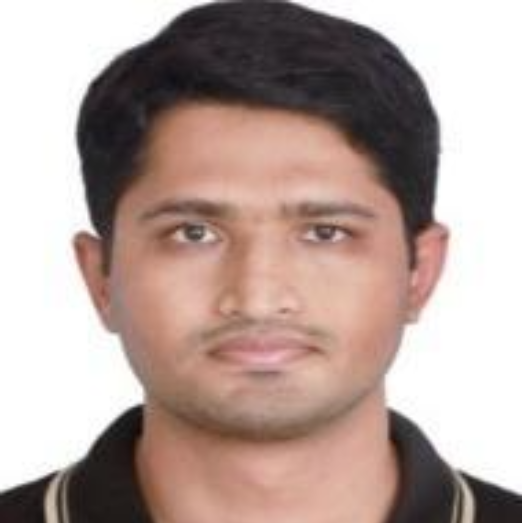International Journal of Wireless and Microwave Technologies (IJWMT)
IJWMT Vol. 10, No. 4, 8 Aug. 2020
Cover page and Table of Contents: PDF (size: 1089KB)
Sagacious Communication Link Selection Mechanism for Underwater Wireless Sensors Network
Full Text (PDF, 1089KB), PP.22-33
Views: 0 Downloads: 0
Author(s)
Index Terms
Flooding mechanism, underwater routing, link selection, sagacious link, sink node
Abstract
In underwater environment, the sensor nodes are deployed for collecting information and sending back to the base station. Establishing astute communication link among these sensor nodes in a multi-link routing environment is a key challenge for all underwater routing protocols. A sagacious communication link can only guarantee the maximum data transfer rate. The link selection mechanism of three underwater routing protocol i.e, Energy-aware Opportunistic Routing (EnOR) protocol, Shrewd Underwater Routing Synergy using Porous Energy Shell (SURS-PES) and Underwater Shrewd Packet Flooding Mechanism (USPF) have been investigated. After analyzing performance results of these protocols interms of packet delivery ratio, end-to-end delay, network lifespan and energy consumption using NS2 with AquaSim 2.0 simulator. The protocol existing, with sagacious link selection mechanism in multi-link routing environment has been identified. The identification of this sagacious link selection mechanism is a novel approach which can give specific knowledge for targeted output without wasting resources for irrelevant objectives.
Cite This Paper
Shahzad Ashraf, Sehrish Saleem, Tauqeer Ahmed, " Sagacious Communication Link Selection Mechanism for Underwater Wireless Sensors Network ", International Journal of Wireless and Microwave Technologies(IJWMT), Vol.10, No.4, pp. 22-33, 2020. DOI: 10.5815/ijwmt.2020.04.03
Reference
[1]S. Ashraf, M. Gao, Z. Chen, S. Kamran, and Z. Raza, “Efficient Node Monitoring Mechanism in WSN using Contikimac Protocol,” Int. J. Adv. Comput. Sci. Appl., vol. 8, no. 11, 2017, doi: 10.14569/IJACSA.2017.081152.
[2]R. Diamant, P. Casari, F. Campagnaro, and M. Zorzi, “Leveraging the Near–Far Effect for Improved Spatial-Reuse Scheduling in Underwater Acoustic Networks,” IEEE Trans. Wirel. Commun., vol. 16, no. 3, pp. 1480–1493, Mar. 2017, doi: 10.1109/TWC.2016.2646682.
[3]R. P. Hodges, Underwater acoustics: analysis, design and performance of sonar. Hoboken, N.J.: Wiley, 2013.
[4]A. S. Gupta and R. McCarthy, “Interpreting Different Features of Shallow Water Acoustic Channels Using Braid Manifolds,” in 2018 Fourth Underwater Communications and Networking Conference (UComms), Lerici, Aug. 2018, pp. 1–5, doi: 10.1109/UComms.2018.8493234.
[5]D. A. Abraham, Underwater Acoustic Signal Processing: Modeling, Detection, and Estimation. Springer International Publishing, 2019.
[6]S. Ashraf, A. Raza, Z. Aslam, H. Naeem, and T. Ahmed, “Underwater Resurrection Routing Synergy using Astucious Energy Pods,” J. Robot. Control JRC, vol. 1, no. 5, 2020, doi: 10.18196/jrc.1535.
[7]S. Ashraf, S. Saleem, and A. Zeeshan, “Diverging Mysterious in Green Supply Chain Management,” Oriental J. Comput. Sci. Technology, vol. 12, no. 2.
[8]A. EL-Bakkouchi, A. Bouayad, and M. E. Bekkali, “A hop-by-hop Congestion Control Mechanisms in NDN Networks – A Survey,” in 2019 7th Mediterranean Congress of Telecommunications (CMT), Fès, Morocco, Oct. 2019, pp. 1–4, doi: 10.1109/CMT.2019.8931405.
[9]M. Goetz and I. Nissen, “GUWMANET – Multicast Routing in Underwater Acoustic Networks,” p. 18.
[10]K. Bruliński, A. Rudziński, and A. Stefani, “Characterization of ultrasonic communication channel in swimming pool,” in 2019 Signal Processing Symposium (SPSympo), Sep. 2019, pp. 167–172, doi: 10.1109/SPS.2019.8882023.
[11]J. Liu, M. Yu, X. Wang, Y. Liu, X. Wei, and J. Cui, “RECRP: An Underwater Reliable Energy-Efficient Cross-Layer Routing Protocol,” Sensors, vol. 18, no. 12, Nov. 2018, doi: 10.3390/s18124148.
[12]Q. JINGGUO, Z. ZILONG, and C. YUHUAN, “Research and Application of Multi-Node Communication and Energy Consumption Prediction Control in Underwater Acoustic Network,” IEEE Access, vol. VOLUME 7, no. 2019, doi: 10.1109/access.2019.2907376.
[13]M. Safkhani, “Cryptanalysis of R2AP an Ultralightweight Authentication Protocol for RFID,” J. Electr. Comput. Eng. Innov., vol. 6, no. 1, Jan. 2018, doi: 10.22061/jecei.2018.1103.
[14]S. Ashraf, T. Ahmed, M. A. Khan, and Z. A. Arfeen, “Challenging strategic trends in green supply chain management,” J. Res. Eng. Appl. Sci., vol. 5, no. 2.
[15]K. Guleria and A. K. Verma, “Comprehensive review for energy efficient hierarchical routing protocols on wireless sensor networks,” Wirel. Netw., vol. 25, no. 3, pp. 1159–1183, Apr. 2019, doi: 10.1007/s11276-018-1696-1.
[16]H. Yang, Y. Zhou, Y.-H. Hu, B. Wang, and S.-Y. Kung, “Cross-Layer Design for Network Lifetime Maximization in Underwater Wireless Sensor Networks,” in 2018 IEEE International Conference on Communications (ICC), Kansas City, MO, May 2018, pp. 1–6, doi: 10.1109/ICC.2018.8422176.
[17]R. W. L. Coutinho, A. Boukerche, L. F. M. Vieira, and A. A. F. Loureiro, “Performance modeling and analysis of void-handling methodologies in underwater wireless sensor networks,” Comput. Netw., vol. 126, pp. 1–14, Oct. 2017, doi: 10.1016/j.comnet.2017.06.027.
[18]R. M. Grant, “Prospering in Dynamically-Competitive Environments: Organizational Capability as Knowledge Integration,” Organ. Sci., vol. 7, no. 4, pp. 375–387, Aug. 1996, doi: 10.1287/orsc.7.4.375.
[19]J. Cao, J. Dou, and S. Dong, “Balance Transmission Mechanism in Underwater Acoustic Sensor Networks,” Int. J. Distrib. Sens. Netw., vol. 11, no. 3, p. 429340, Mar. 2015, doi: 10.1155/2015/429340.
[20]S. Balsamo, A. Marin, and E. Vicario, Eds., New Frontiers in Quantitative Methods in Informatics: 7th Workshop, InfQ 2017, Venice, Italy, December 4, 2017, Revised Selected Papers, 1st ed. 2018 edition. New York, NY: Springer, 2018.
[21]S. Das, A. Biswas, S. Dasgupta, and A. Abraham, “Bacterial Foraging Optimization Algorithm: Theoretical Foundations, Analysis, and Applications,” in Foundations of Computational Intelligence Volume 3: Global Optimization, A. Abraham, A.-E. Hassanien, P. Siarry, and A. Engelbrecht, Eds. Berlin, Heidelberg: Springer, 2009, pp. 23–55.
[22]C. Künzer and S. Dech, Eds., Thermal Infrared Remote Sensing: Sensors, Methods, Applications. Springer Netherlands, 2013.
[23]S. Ashraf et al., “Underwater Routing Protocols Analysis of Intrepid Link Selection Mechanism, Challenges and Strategies,” Int. J. Sci. Res. Comput. Sci. Eng., vol. 8, no. 2, pp. 1–9, Apr. 2020, doi: 10.26438/ijsrcse/v8i2.19.
[24]R. W. L. Coutinho, A. Boukerche, L. F. M. Vieira, and A. A. F. Loureiro, “Geographic and Opportunistic Routing for Underwater Sensor Networks,” IEEE Trans. Comput., vol. 65, no. 2, pp. 548–561, Feb. 2016, doi: 10.1109/TC.2015.2423677.
[25]S. Ashraf, T. Ahmed, A. Raza, and H. Naeem, “Design of Shrewd Underwater Routing Synergy Using Porous Energy Shells,” Smart Cities, vol. 3, no. 1, pp. 74–92, Feb. 2020, doi: 10.3390/smartcities3010005.
[26]S. Ashraf, M. Gao, Z. Mingchen, T. Ahmed, A. Raza, and H. Naeem, “USPF: Underwater Shrewd Packet Flooding Mechanism through Surrogate Holding Time,” Wirel. Commun. Mob. Comput., vol. 2020, pp. 1–12, Mar. 2020, doi: 10.1155/2020/9625974.
[27]T. Issariyakul and E. Hossain, Introduction to Network Simulator NS2, 2nd ed. Springer US, 2012.
[28]J. Qu, Z. Zhang, Y. Cui, J. Wang, and G. Mastorakis, “Research and Application of Multi-Node Communication and Energy Consumption Prediction Control in Underwater Acoustic Network,” IEEE Access, vol. 7, pp. 41220–41229, 2019, doi: 10.1109/ACCESS.2019.2907376.


